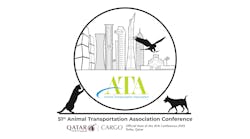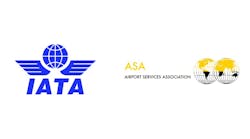Many in our profession are familiar with the old adage “the only way to come out of an aviation related business with a small fortune is to begin the business with a large fortune”. It is true that the price to acquire and operate aircraft can be quite high and many corporate accountants are often stymied with service invoices along with common aviation business practices such as exchange parts and core charges but in the end, the benefits of the aviation asset almost always offset the costs.
The National Business Aviation Association (NBAA) is perceived by many to be a special interest group as well as a professional organization dedicated to provide political clout in Washington, D.C., supporting the interests of corporations. While it is true the association is made up of corporate members, much of its agenda involves looking after a significant part of the general aviation world.
The NBAA Maintenance Committee is made up of about 140 representatives from member companies along with recognized industry experts and advocates. This number includes various NBAA sanctioned “Technical Committees” associated with industry manufacturers. The body of the main committee consists of around 35 members. Although the undertaking touts supporting initiatives that enhance the mission of corporate aviation most all activities, in the end, provide value throughout the aircraft industry.
Having just recently completed the two-year term as Maintenance Committee Chairman, I would like to relay some of the worthwhile activities of this dedicated group of professionals that volunteer their time and talents.
Industry Challenges
As most are aware, the aviation maintenance profession is currently facing many challenges. In many cases, we are still operating under regulations created 50 years ago. Technology advancements are coming at a much faster pace and the vast majority of us charged as the “guardians of airworthy” are rapidly approaching retirement. A&P school enrollments, for the most part, are well below school capacity and significant percentages of school graduates elect not to enter an aviation-related field.
Even those that fulfill the required A&P school curriculums and do enter the profession find themselves far less than qualified to undertake many of the tasks required on current generation aircraft.
One of the major undertakings of the Maintenance Committee is promoting a project known as NEXT TECH for NEXTGEN. This initiative targets several fronts including defining the “Need to Know” of today’s technicians along with the means to impart the required knowledge. One way of engaging middle and high school kids is to illustrate that aviation maintenance is not a dead trade but a very attractive profession with all the high-tech gadgetry they already expect and understand.
The Technical Rewards And Career Scholarship (TRACS) program creates a means of delivering real world scholarships and in some cases, assists in funding basic schooling as well as providing complete Maintenance Initial Courses along with a cost of living allowance to help defer costs associated with attending a school outside the reach of the scholarship winner’s home. The estimated value of these career awards is around $500,000 and unfortunately, there are frequently more scholarships available than there are applicants.
In addition to tackling the issues associated with technicians, the committee wholeheartedly pursues regulatory concerns. This arena permits jousting with regulators regarding rules and actions that may apply to one segment of the industry but is not well suited for business/general aviation. Positive outcomes have been realized in numerous areas including the application for Letters Of Authorization (LOA) for operation in Reduced Vertical Separation Minimums (RVSM) airspace. Current activities include the Airworthiness Directive process and considerations to Alternate Means Of Compliance (AMOC) and terminating actions, use of electronic documentation along with conforming certain analog regulations to the now predominantly digital world.
The now world renowned Maintenance Management Conference (MMC) is one of the shinning stars illuminating the way for those engaged in support of a wide array of aircraft. Although the conference is referred to as a “management” venue, it does not exclusively cater to maintenance managers. Approximately 70 percent of business aircraft operators depend on various service networks, repair stations and independent freelancing technicians to ensure their airworthiness. In addition, many flight department managers and often flight crew members are tasked with overseeing the maintenance function. MMC provides resources including regulatory updates, technology briefing along with management and human factors programs. This conference has seen dramatic growth in the past few years and many of the attendees have been overheard saying “if there were only one industry function I could attend, it would be MMC.”
Recently a Connectivity sub-committee has been added to the cadre and consists of a team of knowledgeable professionals exploring ways to develop standards, education and training for those tasked with operating and supporting high speed data, in-flight communications, and WiFi as well as general data networks. Thanks to the forward thinking of Jim Jensen, founder and CEO of Satcom Direct and his crew, for undertaking the project of creating an Aero IT standard along with a supporting course to make attendees proficient in airborne network technology.
Collaborative Efforts
The NBAA does offer interesting opportunities for collaborating with other global organizations with similar interests and where necessary provides legal and in some cases guidance on how and when to approach regulators. One recent collaborative initiative is participation with the globally recognized standards group ASTM International. The project, from the NBAA perspective, is the metamorphosis of programs intended to make sure technicians working business aircraft were up for the task and equipped with the required knowledge to contend with the challenges accompanying the modern office in the sky.
It seems there is a universal concern regarding the need to know of today’s aerospace professional, not only those entrusted with return to service authority but also those most involved in the aerospace industry. This includes equipment and wiring installers, interior specialists, composites technicians, flight technicians, inspection personnel, and of course those validating airworthiness. A multifaceted plan includes assessment and rejuvenation of A&P school curriculums, create standards specifically developed for each identified area of specialization, petition regulators to assist in bringing analog regulations in line with the digital age and reestablish the aerospace profession as a viable and attractive career choice for young people.
The mission statement of the NBAA: “To foster an environment that allows business aviation to thrive in the United States and around the world.” Yes, the National Business Aviation Association does align its agenda around business aviation but it seems what is good for business is often good for the rest of us. The Maintenance Committee does appreciate input regarding issues that impact aviation activities world-wide and information pertinent to ongoing committee activities can be reviewed at: www.nbaa.org/ops/maint/. In addition contact information is provided on the NBAA site for the entire leadership team.
The realization of this group of professionals is that the aviation maintenance profession is blessed with an abundance of brilliant people capable of overcoming a wide array of challenges. After all, when something is broken, who better to fix it than a mechanic?



